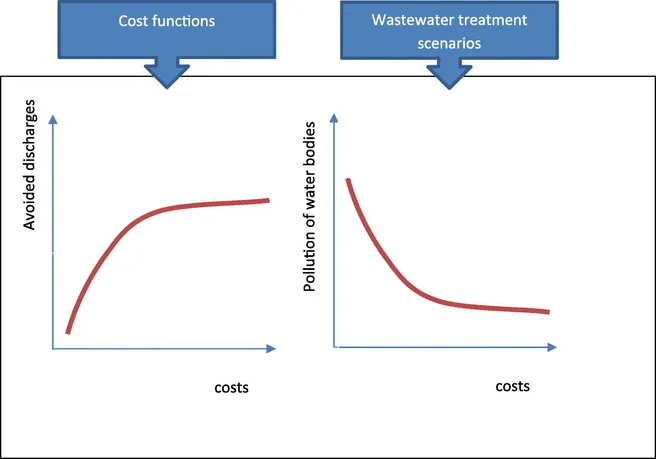In this contribution, we analyse scenarios of advanced wastewater treatment for the removal of micropollutants. By this we refer to current mainstream, broad spectrum processes including ozonation and sorption onto activated carbon. We argue that advanced treatment requires properly implemented tertiary (nutrient removal) treatment in order to be effective. We review the critical aspects of the main advanced treatment options, their advantages and disadvantages. We propose a quantification of the costs of implementing advanced treatment, as well as upgrading plants from secondary to tertiary treatment when needed, and we illustrate what drives the costs of advanced treatment for a set of standard configurations. We propose a cost function to represent the total costs (investment, operation and maintenance) of advanced treatment. We quantify the implications of advanced treatment in terms of greenhouse gas emissions. Based on the indicators of total toxic discharge, toxicity at the discharge points and toxicity across the stream network discussed in Pistocchi et al. (2022), we compare costs and effectiveness of different scenarios of advanced treatment. In principle the total toxic load and toxicity at the points of discharge could be reduced by about 75 % if advanced treatment processes were implemented virtually at all wastewater treatment plants, but this would entail costs of about 4 billion euro/year for the European Union as a whole. We consider a “compromise” scenario where advanced treatment is required at plants of 100 thousand population equivalents (PE) or larger, or at plants between 10 and 100 thousand PE if the dilution ratio at the discharge point is 10 or less. Under this scenario, the length of the stream network exposed to high toxicity would not increase significantly compared to the previous scenario, and the other indicators would not deteriorate significantly, while the costs would remain at about 1.5 billion Euro/year. Arguably, costs could be further reduced, without a worsening of water quality, if we replace a local risk assessment to generic criteria of plant capacity and dilution in order to determine if a WWTP requires advanced treatment.
